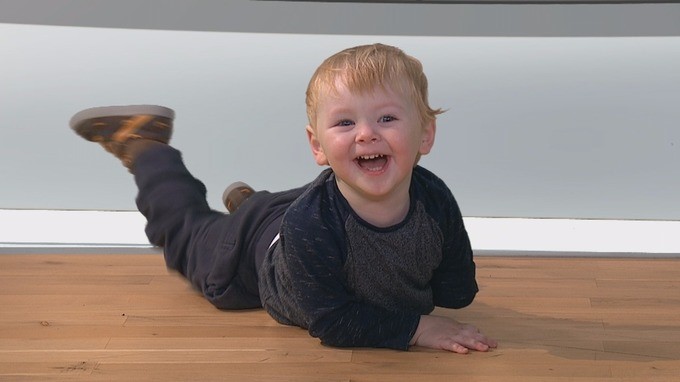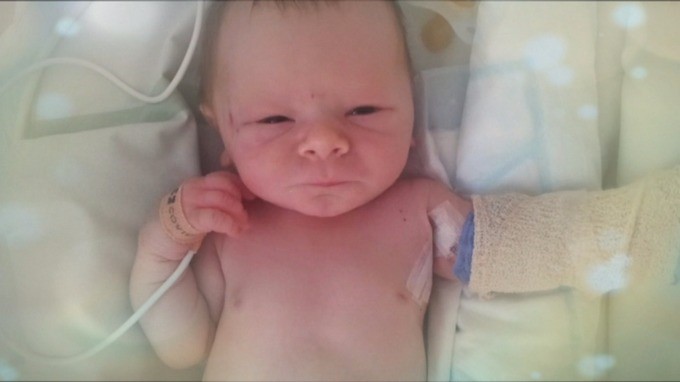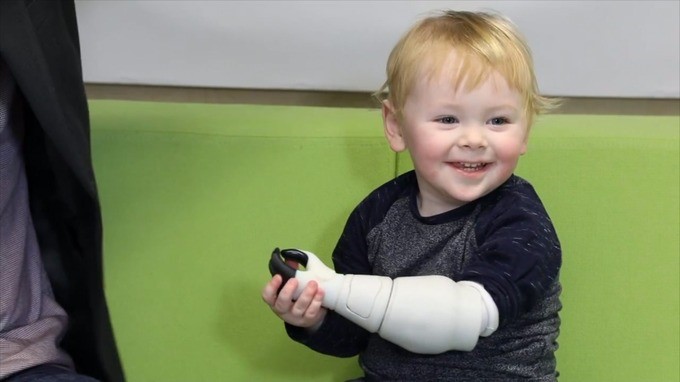Father created a bionic prosthetic arm for his son with a 3D printer and X-Box

Saul Smith-Ryan at ITV News.
The ITV News article is translated for you Top 3D Shop .
The father of the child, whose arm had to be amputated, took the plunge and created a bionic limb for his son using the XBox console and a 3D printer.
When Sol Smith-Ryan was born, doctors discovered a blood clot in his hand, which left them no choice but to amputation.
The family joined Alastair Stewart at ITV Studios on Lunchtime News.
')
Saul's parents were told that the baby could get an electronic prosthesis when he was three or four years old, and a mechanical one - when he reached 18 months.
Ben Ryan, Sola’s father, felt that it was important for the boy to get a prosthesis as soon as possible.

Ben Ryan believed that the sooner Sola had a prosthesis, the easier he would become comfortable with it.
“With my knowledge in the field of psychology, I knew that to sit back (as suggested by the National Health Service) is not the best solution, and I thought I might be able to offer a better way out,” the former teacher explained.
Mr. Ryan studied information about prosthetic hands and found “a fairly clear pattern that if children do not provide a suitable functional prosthesis before the age of two, then after reaching 2 years they tend to reject it”.

Sol's hand was amputated after his birth. Photo courtesy of the Smith-Ryan family.
Mr. Ryan believed that the sooner Sol got an artificial arm, the better he could get used to it, and he set himself the goal of developing a prosthesis that could be worn from an earlier age and that did not have the flaws of electronic or mechanical prostheses that are often rejected. small children.

Sol's hand at the moment is the second prototype created by his father.
Throwing work to give all his strength to the project, Mr. Ryan spent a year developing an artificial limb, inspired by the principle of the spider legs, working on the hydraulic principle. Without prior knowledge of prosthetics, Mr. Ryan began by watching many educational videos on YouTube to see how this goal could be achieved. A year later, without using anything other than the X-Box scanner and 3D printer at the University of Bangor, Saul's father created his first prototype.
Sol's bionic arm allows him to use his elbow to create pressure that forces fluid to circulate inside the prosthesis. The fluid pressure moves the thumb of the prosthesis, which allows you to take objects.
Kate Smith, Sol’s mother, said that she hadn’t seen her husband all day long while he was working on his project in the barn, in their garden in Engles, sometimes it seemed to her that he was obsessed.
“But Ben is a very purposeful person, so I knew that it was his desire to help his son and that he would succeed.”
In the leadership of the Ministry of Health, the invention of Ben Ryan was called “possibly revolutionary in prosthetics”.
After succeeding with a prosthesis for his son, Ryan set himself a goal to collect £ 150,000 through a crowdfunding page to allow his Ambionics company to enter the prosthetic market.
Can a similar project appear in Russia? Will affordable, and at the same time high-quality and functional prostheses be available for our disabled people? Share your opinion in the comments.
Source: https://habr.com/ru/post/453034/
All Articles